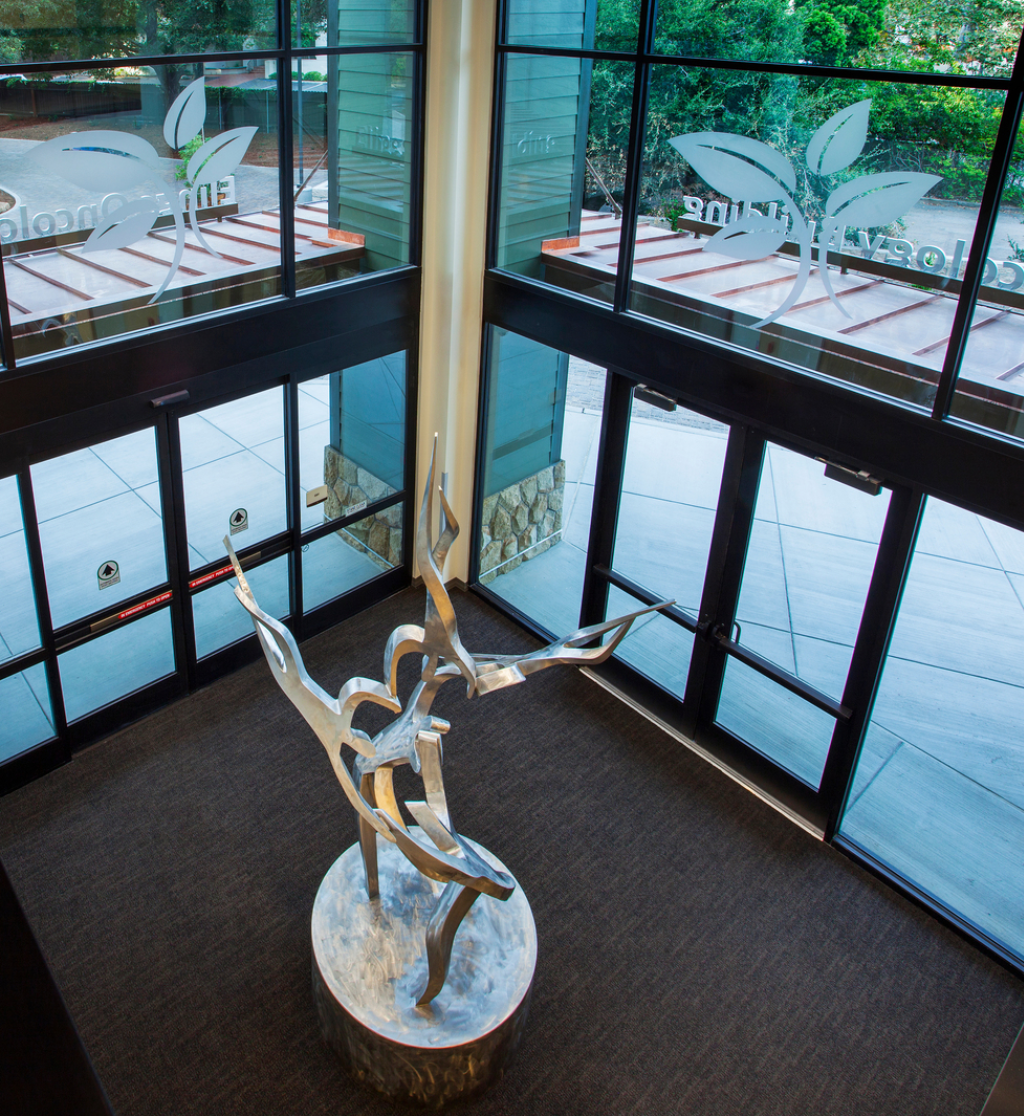From Realtà Mapei n° 35 - 8/10/2022

“The Ridley Tree Cancer Center was constructed during the course of 22 months as a new, built-from-the-ground-up facility,” explained Mike Bogna, Vice President of Construction with G.L. Bruno Associates, Inc. and the Project Manager for this project. It is a comprehensive cancer center, which means that the facility offers all phases of oncological treatment, from wellness, surgery and radiation to a host of cutting-edge therapies – all offered on-site.
In addition to the innovative treatment center, the campus also includes a three-story parking structure and an auditorium; both structures were also new builds on the site. “The entire project was completely funded through community donations,” Bogna continued. With that amount of community involvement, this was bound to be a high-profile project even before construction began. It was also a relatively straightforward project – until Mother Nature got involved.
The jobsite had to be located near the Sansum Clinic, a world-renowned hospital in Santa Barbara, California, because the center is affiliated with that hospital. It is a physically stunning location, with mountains, trees and a seasonally active creek nearby. Not to mention the town of Santa Barbara itself.
Santa Barbara is known for many things, two of which happen to be landmark architecture and, more recently, being part of California’s drought. Both of these elements would come into play on the jobsite.
“As on any jobsite, we were sensitive to the local residential area in and around the construction site,” Bogna stated. In this case, they were located near a preschool, so added precautions were taken to mitigate construction noise and to control dust. “There were also two historically significant houses. Those were relocated,” Bogna continued. What could not be relocated was the seasonally active creek.
In drought-stricken California, seasonally active creeks are taken into consideration in the design phase of any construction project, but they are not necessarily something that comes into play on the average jobsite – or in normal life in general. That changed with this job, especially when it came time for the flooring installation.
“There was a river running about 20 feet [6.10 m] from the first-floor concrete slab,” explained Ozzie Amparan, owner of Amparan Flooring, Inc., the contracting company brought in to install the flooring. As it turns out, 2017 (the year of this project) was also the year that the famed “California drought” ended – great news for the state, but not such great news for the state’s construction projects. Fortunately, the cancer center project also involved MAPEI.
MAPEI on the job
“This was a three-story project involving 47,822 square feet [4 443 m2] of concrete preparation, moisture control/vapor emission control and resilient installation,” explained Adam Amparan, Ozzie’s son and co-installer on the project. “The moisture and vapor emission control became paramount.” The specification called for MAPEI’s Planiseal VS, an alkali-resistant, epoxy moisture-reduction barrier, to seal the newly poured concrete on each of the building’s three floors. With a six-man crew and eight weeks to finish the project, there was no time to waste. “The walls and the cabinets were already up,” Ozzie said.
“Following the GC, we started on the third floor and went from room to room, working our way down the floors,” Adam said as he described the process. Using Blastrac equipment, the Amparan Flooring crew shotblasted the floors to a concrete surface profile (CSP) of #2 using a grinder to grind around the edges.
“There was a lot of chatter left over from the concrete pour,” Adam continued. Dust-control measures on the shotblasting equipment whisked most of the debris and dust away, but anything that remained was swept and vacuumed up.
Next, the crew used rollers to apply the Planiseal VS – sealing and creating a moisture-resistant barrier on top of the concrete. This was followed by roller application of Primer WE, a water-based, epoxy primer designed to enhance the adhesion of self-levelers.
The self-leveler that was used for the project was MAPEI’s Ultraplan 1 Plus, a quick-setting, self-leveling, self-drying underlayment and repair mix for interior concrete and engineer-approved floors. Within a matter of hours, the crew was able to begin applying the adhesive, Ultrabond ECO 711, and begin installing the resilient flooring.
Rain, rain go away – unless you have MAPEI
“When we first arrived on the jobsite, it had been raining so hard, the water table had risen. There was no place for all of the water to go. The joke was, ‘Is there a river running through it?’ because there was suddenly a river racing seemingly 20 feet [6.10 m] from the first-floor slab,” Ozzie explained. “It was unforeseeable and unprecedented. But, we were able to shotblast, seal and prime with MAPEI.”
The project opened on time. And, by all accounts, this is one of the foremost treatment centers in the United States – if not the world. Innovative products helped one of the most innovative treatment centers open. Who knows? Perhaps one day the center’s cutting-edge programs will benefit us all. In the meantime, it provides the best care and comfort to all who enter.